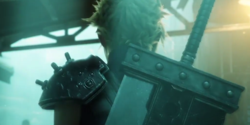I'm condused about the readings of the kanji. Some people say the on-readings are necessary to… - Feed Post by Jonasan
I'm condused about the readings of the kanji. Some people say the on-readings are necessary to learn the language. Others say it's not necessary and if you use them too much you'll seem arrogant. Help me, please.
posted by Jonasan July 11, 2015 at 10:34pm
Comments 5
 Both are 100% definitely necessary.
Both are 100% definitely necessary.
You can't pick and choose to use whichever readings you want to use for any particular word--you must use the correct reading for each specific word.
For example:
漢字 is the word meaning "Chinese character(s)"
漢 on-reading = "kan".
字 on-reading = "ji"; kun-yomi = "aza".
漢字 is always read as "kan" + "ji" = "kanji" (かんじ). You can't just choose to say that word using kun-reading of each kanji. For a start the first character 漢 doesn't even HAVE a kun-reading at all! :PJuly 12, 2015 at 1:37am Thanks, but there are also words like 水 "water" for example. The on reading is sui and the kun reading is mizu. I have no idea wich one to choose.July 12, 2015 at 7:18am
Thanks, but there are also words like 水 "water" for example. The on reading is sui and the kun reading is mizu. I have no idea wich one to choose.July 12, 2015 at 7:18am When you see a kanji by itself, usually it's the kun reading. On the other hand, when it's in a compound, the on reading. This is a not a rule, has a lot of exceptions, but if you have no idea which to choose, it might be a good start.July 12, 2015 at 7:54am
When you see a kanji by itself, usually it's the kun reading. On the other hand, when it's in a compound, the on reading. This is a not a rule, has a lot of exceptions, but if you have no idea which to choose, it might be a good start.July 12, 2015 at 7:54am Yeah, what beee said basically, but I'm going to type this anyway... ^^;
Yeah, what beee said basically, but I'm going to type this anyway... ^^;
"on reading" is really called 音読み (onyomi).
"kun reading" is really called 訓読み (kunyomi)
読み "yomi" in English simply means "reading".
音 "on" in English means "sound".
訓 "kun" in English means "instruction / explanation / description".
So onyomi are simply the meaningless SOUNDS of the character, sounds used previously by the Chinese over a thousand years ago at the time that Japan began to use Chinese characters to write the Japanese language.
On the other hand, kunyomi are WORDS which already existed in the Japanese language from before the time that Japan began to use Chinese characters.
Onyomi are essentially meaningless old Chinese sounds. Kunyomi are native Japanese meaningful words.
But after kanji were brought into the Japanese language, the onyomi meaningless sounds became useful in the process of creating new words. Using the meaning and sound (onyomi) of each kanji, multiple kanji were strung together making words with more complex meanings through the combination of meanings of each of the kanji.
So basically, when 水 is written on its own, this is the kanji that got used to write the word which already existed in the Japanese language meaning water, which is "mizu". Japan had water hundreds of years before kanji were used to write their language, and they obviously had a common spoken word for it!
The meaningless sound "sui" which came from old Chinese is what you find most often in words with multiple kanji:
水 "mizu" = water (kunyomi)
水泳 "sui + ei" = swimming (onyomi + onyomi)
水曜 "sui + you" = Wednesday (onyomi + onyomi)
水星 "sui + sei" = Mercury (onyomi + onyomi)
水力発電所 "sui + ryoku + hatsu + den + sho" = hydroelectric power station (all onyomi)
Taking that last word 水力発電所 as an example of how the meanings are used:
水 (water) + 力 (power) + 発 (emit) + 電 (electricity) + 所 (place)
Here's a great webpage explaining some basic hints for when to use on or kun readings. I don't know what level you are at, so it might be too much to take in, but definitely worth adding to your favourites for later:
http://lingwiki.com/index.php?title=On_vs._Kun_readingsJuly 12, 2015 at 8:26am Thank you very much, mog86uk. Your explanation and the link are really helpfull. I'm still very much a beginner in learning japanese, but I've learned 25 kanji so far with both readings. Still Long road ahead. I hope I'll get to your level someday.July 12, 2015 at 8:38am
Thank you very much, mog86uk. Your explanation and the link are really helpfull. I'm still very much a beginner in learning japanese, but I've learned 25 kanji so far with both readings. Still Long road ahead. I hope I'll get to your level someday.July 12, 2015 at 8:38am
